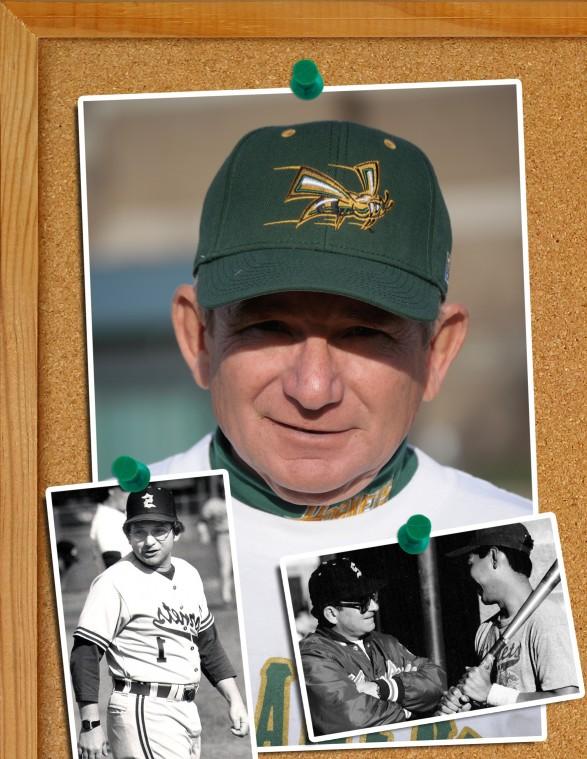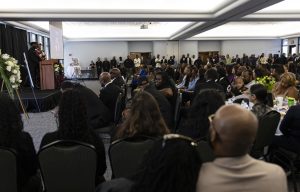Three Decades of Coaching
February 14, 2008
There have been eight different men’s basketball coaches, five different football coaches, five different men’s soccer coaches, but only one baseball coach at Sacramento State over the last three decades.
Sac State baseball coach John Smith is gearing up for his 30th season as skipper for the Hornets. Smith played for Cal Boyes at Sac State from 1971-72, and the following year he was a team assistant. After graduating in 1973, Smith coached the Encina High School baseball team, leading it to a Central Valley Conference title.
In November of 1978, Smith became the fourth Hornet coach in four consecutive years after Boyes’ retirement in 1975.
“When I was hired, I was told it was going to be a one-year position,” Smith said. “For me at the time, it seemed like a great opportunity to get some experience and do something for my resumé as far as being involved at a college level.”
After the 1979 season, Smith was offered the job for another year. The 1980 season was the first winning season for the Hornets since Boyes retired.
“The whole time I was doing this I was teaching at Rio Americana High School full-time,” Smith said.
After Smith’s third season he was offered a full-time position as the baseball coach if he completed his master’s degree.
“In the spring of 1981 we went 32-18 and had our first real break-out year,” Smith said. “During that year, I taught high school, coached the Sac State team and worked on my thesis paper.”
It was in the 1980s when the Hornets started winning a healthy number of games and advanced to the postseason on more than one occasion.
“We started a run where we were winning a lot more than we were losing,” Smith said. “By 1985 we made a run at the Western Regionals and got beat in the fifth game of a five-game series by Cal Poly Pomona, that had already won, like, three national championships.”
In 1986 and 1988 the Hornets won the NCAA Western Regional Tournament and went to the Division II College World Series. The team placed third in 1986 and second in 1988.
“We beat Cal Poly Pomona in 1988 to go to the World Series,” Smith said. “That’s the year we lost to Florida-Southern in the 12th inning of the championship game.”
Smith said the 1988 team was the most successful team he coached, but added all of the teams he coached were special.
“They were all good teams and great groups of young men,” Smith said. “That’s why it is impossible to say that the (1988 team) is better than the others when you have had so many good (teams).”
Smith said the 1987 team was the most talented team he has coached.
“We had nine guys on the 1987 team get drafted, but we couldn’t put it all together and get into regionals,” Smith said.
The Hornets moved up to D-I and played in the Western Athletic Conference from 1993-96. The team changed conferences and played in the Big West from 1997-2003. The team currently is a part of the WAC and has been since 2006.
Smith is the second winningest coach in Sac State history with 810 career wins. Only former women’s volleyball coach Debby Colberg, who retired last fall, has more to her name with 828 wins.
During Smith’s three decades of coaching, there have been dramatic improvements made to Hornet Field since the time he played there in 1972.
“It’s hard to imagine what that field was like,” Smith said. “There were no stands, there were no dugouts and there wasn’t a clubhouse. The fences were beyond where they are now?it was 369 (feet) down the left field line, 389 (feet) down the right field line and 420 (feet) to dead-center field. It was definitely a pitchers’ ballpark.”
The current dimensions of Hornet Field are 333 feet down the left and right field lines, 370 feet to the gaps and 400 feet to center field.
He said after his third season as the Hornets coach that a new back-stop was constructed to replace the original. Smith said that the original was too close to home plate and had an overhang that caught all the foul balls, more closely resembling a softball back-stop.
Dugouts were built and the home run fence was moved closer, which “gave the field more professional dimensions.” Before the parking structure was built beyond the left field fence there were temporary classrooms in its place.
“Somewhere along the way they decided they were going to tear the temporary classrooms down and build a parking lot,” Smith said. “We had an outfield fence that was 30 feet high in left field for the longest time to protect the cars in the parking lot.”
According to Sac State Facility Services, Parking Structure I was completed in 1992 and Smith said it gave the field character.
“As much as it was a pain in the rear during its construction, I knew it would be awesome to have (the parking structure) out there down the road, and it is to this day,” Smith said.
The construction of the clubhouse, the batting cages and the stadium seating were the most recent projects completed at Hornet Field. Smith said he decided to build a clubhouse at the field in 1986, but the plans took more than a year to get approved. Along with Smith, coaches and former players helped to build the clubhouse.
Originally, the lockers in the clubhouse were old steel lockers passed down from the football team. When the XFL (Extreme Football League) folded after a year, Smith was able to buy the lockers that the team in San Francisco had used which were relatively new, bigger and more modern looking.
Smith said building the batting cages located beyond the right field fence was a gradual process that took 10 years to complete. Improvements were made as the team got more money through fundraising. The process of building Hornet Field to what it is today is very similar to the way the batting cages were built.
“Over the years we have added stuff (to the field)?we have never been able to build it all at one time. It has taken all 30 years to get it the way it is right now,” Smith said.
Smith said in 2003 the baseball team received allocated money to build stadium seating for more than 1,200 fans.
“The stadium we have now took me 25 years to get,” Smith said. “It’s a nice, very functional, quaint little stadium and it has some character to it?it’s very suited for our needs.”
“It didn’t come overnight. A lot of hard work and hours went into it. The players we’ve had over the years and the coaches we’ve had on the staff have all contributed to making (Hornet Field) into what it is today. It wasn’t just John Smith, I’ve had a lot of help,” Smith said.
Sac State Director of Athletics Dr. Terry Wanless said Smith’s unwavering commitment has made him a great fit for the institution and has created his legacy as the Hornets’ baseball coach.
“As an alumnus, certainly he has developed a passion through that experience toward this university and has diligently worked toward making the baseball program the best he can possibly make it,” Wanless said. “When you look at the facilities that were here when coach Smith started versus the facilities we have now, he’s been part and parcel to that change and is personally reflective of that change.”
“If I have anything to say about my career, I have been blessed tremendously to have been surrounded by a lot of great individuals, with great character and great families to support them,” Smith said. “When I’m done and I’m sitting on the bank, fishing some place, I’ll be able to look back and remember all the special things.”
Andrew Eggers can be reached at [email protected]
























































































































